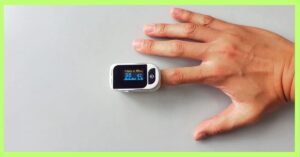
In the ever-evolving landscape of medical technology, pulse oximeters have become a staple in healthcare settings, offering a non-invasive method to assess oxygen saturation levels in patients. This device, often clipped onto a finger or earlobe, employs light absorption principles to measure the proportion of oxygenated hemoglobin in the blood. While pulse oximeters provide swift and convenient readings, concerns about their accuracy and precision have spurred discussions.
Understanding Accuracy and Precision in Healthcare Measurements
Accuracy and precision are crucial elements in medical measurements, each playing a distinct role in the reliability of data. Accuracy refers to the proximity of a measured value to the true value, while precision relates to the consistency and reproducibility of measurements. In the context of pulse oximeters, both accuracy and precision are vital to ensure trustworthy readings.
Factors Affecting Pulse Oximeter Accuracy
Sensor Placement and Skin Condition
The accurate placement of the pulse oximeter sensor is pivotal. Misalignment or improper contact can lead to inaccurate readings. Additionally, the condition of the skin, whether cold or clammy, can affect signal transmission and subsequently, accuracy.
Ambient Light Interference
External light sources, such as fluorescent bulbs, can interfere with the oximeter’s LED lights, causing inaccuracies. Shielding the sensor from excessive ambient light enhances precision.
Patient Movement
Patient movement introduces variability in readings. Motion disrupts the sensor’s ability to consistently detect signals, impacting both accuracy and precision.
Nail Polish and Skin Pigmentation
Dark nail polish or skin pigmentation may hinder the sensor’s light penetration, affecting the accuracy of oxygen saturation measurements.
Precision of Pulse Oximeter Readings
Signal-to-Noise Ratio
Maintaining a high signal-to-noise ratio is essential for precise readings. Noise, including electrical interference, can obscure accurate data capture.
Averaging and Signal Filtering
Averaging multiple readings and applying signal filters enhance precision by reducing random fluctuations in the signal, yielding a more stable reading.
Sensor Calibration
Regular calibration ensures that the oximeter provides accurate measurements. Calibration corrects any inherent biases in the device.
Comparing Pulse Oximeter Accuracy Levels
Clinical Validation of Pulse Oximeters
Different pulse oximeter models undergo clinical validation to assess their accuracy and precision. This process involves rigorous testing against established standards to ensure reliable performance.
Clinical Implications of Accurate Pulse Oximetry

Patient Safety and Monitoring
Accurate and precise pulse oximetry is pivotal in critical care, anesthesia, and post-operative monitoring. Reliable readings aid healthcare providers in making informed decisions for patient well-being.
Disease Management and Diagnosis
In conditions like chronic obstructive pulmonary disease (COPD) and sleep apnea, accurate pulse oximetry assists in diagnosing and managing the progression of the disease.
Conclusion
Pulse oximeters stand as invaluable tools in modern healthcare, aiding medical professionals in monitoring patients’ oxygen saturation levels. Understanding the nuances of accuracy and precision in pulse oximetry is essential for ensuring reliable data that supports effective clinical decisions.
FAQs About Pulse Oximeter Accuracy
Can Nail Polish Affect Pulse Oximeter Accuracy?
Yes, dark nail polish can interfere with accurate readings by impeding light transmission through the nail.
Are There Situations Where Pulse Oximeters May Not Provide Accurate Readings?
Yes, instances of poor circulation, low perfusion, or excessive patient movement can impact the accuracy of pulse oximetry.
How Can Healthcare Professionals Enhance the Accuracy of Pulse Oximetry?
Healthcare professionals should ensure proper sensor placement, minimize motion, and consider alternate sites for monitoring if accuracy is compromised.
Is Motion a Significant Factor in Inaccurate Pulse Oximeter Readings?
Yes, motion can disrupt the oximeter’s ability to capture consistent signals, leading to inaccurate readings.
Can External Factors Like Lighting Impact the Precision of Measurements?
Absolutely, excessive ambient light can interfere with the oximeter’s LED lights, affecting the precision of measurements.






